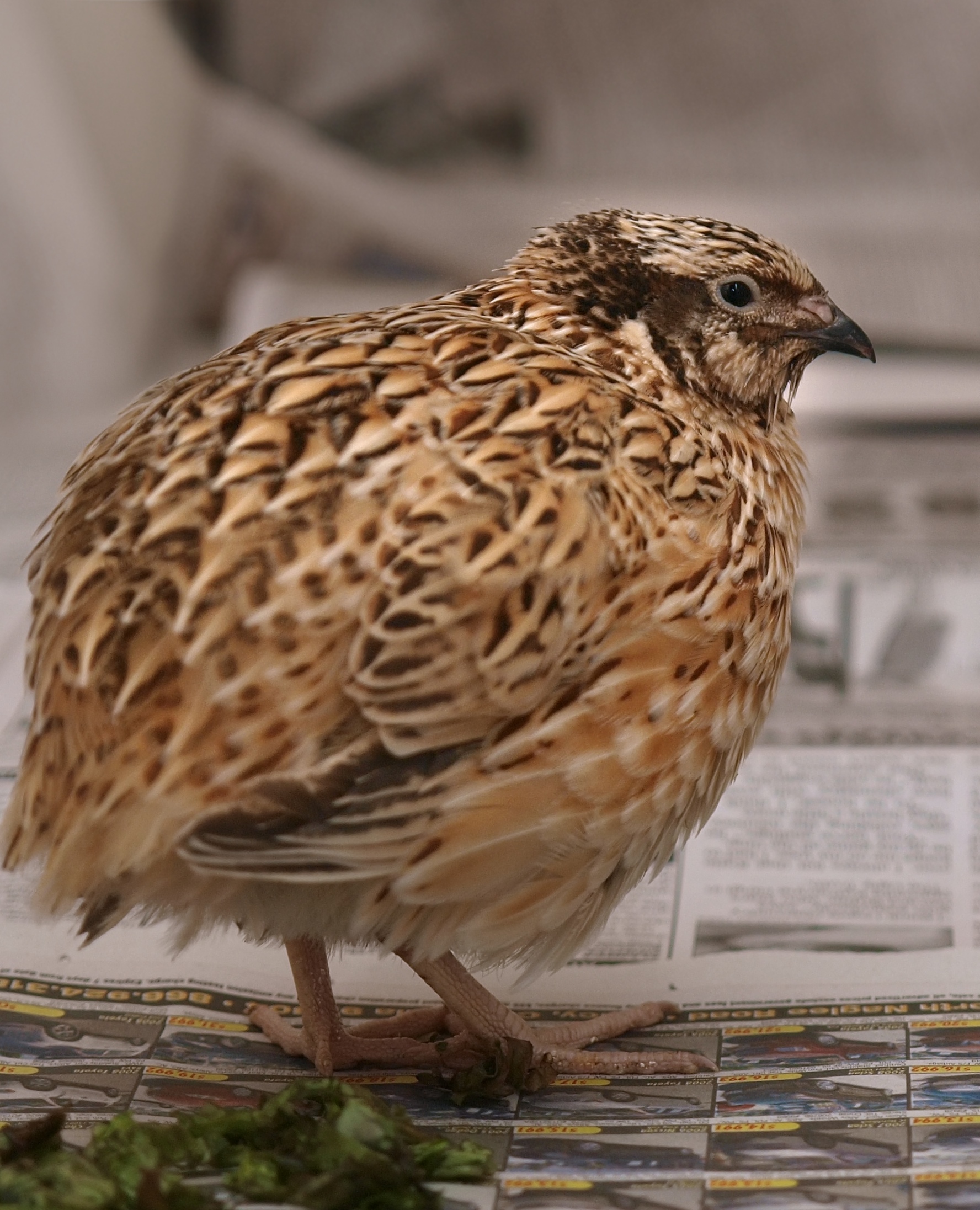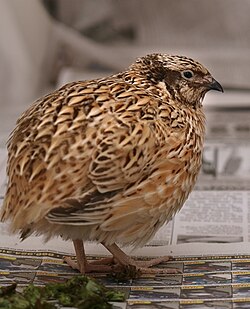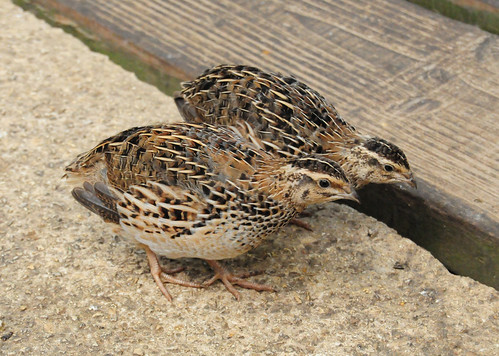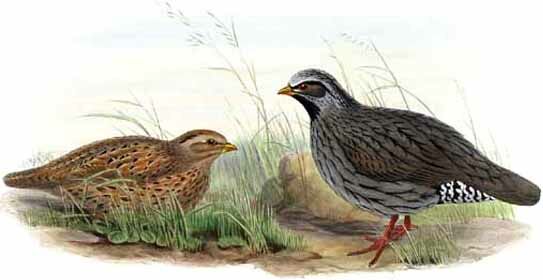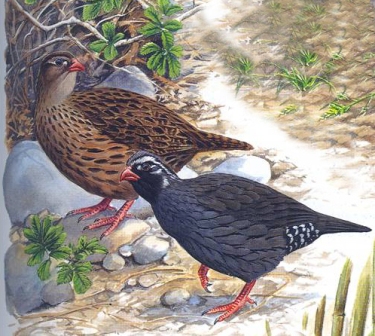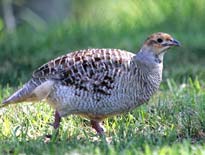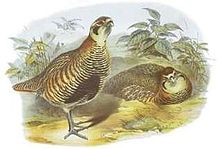Rain Quail
The Rain Quail or Black-breasted Quail (Coturnix coromandelica) is a species of quail found in the Indian Subcontinent.
Distribution
Grassland, cropped fields, and scrubs in the Indus valley of central Bangladesh, India, Nepal and Pakistan, ranging across the Gangetic plains, and parts of peninsular continental India. Mostly seen in winter further south.

Description
The Rain Quail lacks barring on primaries. The male has a black breast-patch and distinctive head pattern of black and white. The female is difficult to separate from female Common Quail and Japanese Quail, although the spots on the breast are more delicate. It is 6–6.5 in (15–17 cm) and weighs roughly 2.25–2.5 oz (64–71 g)
The call is a metallic chrink-chrink, constantly repeated mornings and evenings, and in the breeding season also during the night. It is quite unmistakably distinct from the call of the Common Grey Quail.
Breeding
- Season: overall March to October, but chiefly after the break of the southwesterly monsoon in June.
- Nest: Eggs are laid in a scrape in the ground, sometimes in the open under a Euphorbia or similar bush. A clutch of 6 to 8 eggs are laid, resembling those of Grey Quail but smaller. Only the female incubates.
Other references
- BirdLife International (2004). Coturnix coromandelica. 2006. IUCN Red List of Threatened Species. IUCN 2006. www.iucnredlist.org. Retrieved on 6 May 2006. Database entry includes justification for why this species is of least concern
| Rain Quali | |
|---|---|
 | |
| Conservation status | |
| Scientific classification | |
| Kingdom: | Animalia |
| Phylum: | Chordata |
| Class: | Aves |
| Order: | Galliformes |
| Family: | Phasianidae |
| Subfamily: | Perdicinae |
| Genus: | Coturnix |
| Species: | C. coromandelica |
| Binomial name | |
| Coturnix coromandelica (Gmelin, 1789) | |




videos









